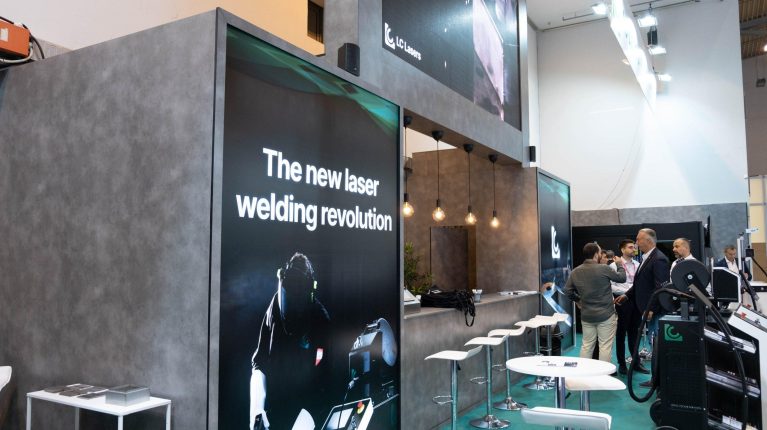Laser welding within the electrical industry

Summary:
As it has already been explained in previous occasions, laser welding is one of the best alternatives for the alloying of materials or objects in different types of industries.
In this case, we will talk about the different applications that can be found in the electrical industry, all the benefits and qualities of laser welding machines and finally we will give you some examples of certain materials applicable to laser welding. Laser welding is a really good alternative for the welding of materials that need a good electrical conductivity, which are mostly all types of metals and steels, taking into account all its benefits and the speed of its processes.
If after reading the article, you still have doubts, you can contact us through our web form and a technician specialized in laser welding will contact you to solve all your doubts.
Laser welding applied to the electrical industry:
Electricity is the main source of modern life. It is used for many things in daily life and is essential for our survival. In commercial production, industrial electricity is essential for the correct performance of the company, especially for businesses whose basic model is mass production and remote production.
When it comes to laser welding, there is no better technique for joining different materials applied in the electrical industry. It can weld large, superficial and deep parts and, in many cases, can be easily combined with other welding systems.
Nowadays, the most important and complex structures and products in the electrical industry are made with laser welding processes. For example, electrical towers or metal structures are welded using laser welding. The most convincing aspect of this form of welding is that it offers a fast solution, as it can produce spot welds in seconds.

Advantages of laser welding compared to traditional methods:
Laser welding machines offer high operating speeds and large welding diameters, factors that ensure high productivity.
Depending on the thickness of the weld, a higher speed may or may not be necessary; these machines can use different speeds. The maximum thickness that can be welded at one time depends on the laser power, and this factor must be taken into account when selecting a laser welding machine model. However, the fact that it is a high-performance equipment allows some materials to be welded in a single pass.
Another factor contributing to the high productivity of this device is that it does not require the additional material used in other types of welding, which contributes to additional savings.
In some cases, the welding process can be simplified and stronger joints can be achieved at a lower cost. The high penetration of laser welding is useful, for example, in applications such as sealing tanks and welding thick profiles that form parts of ships and vehicles.
Laser welding is strong and welds with no distortions that can deform the joint. Laser welding offers many advantages over traditional alternatives.
Of particular note is the ease of use, which facilitates precision welding.

Materials within the electrical sector in which we can apply laser welding:
Laser devices offer a wide range of options and versatility. Laser welding machines allow us to produce a wide range of welds using a variety of methods.
Using laser welding equipment, we can guarantee very thin welds with great depth and penetration. We can achieve welds with almost no protrusion and no overheating: saving a lot of time in polishing, obtaining a strong and deep weld without overheating the material and ensuring much less deformation, especially for materials with a small thickness.
Below are some examples of materials that can be welded with a laser welding machine, which in turn are usually the most used in the electrical industry due to their good conductivity:
- Carbon steel. Laser welding machines give good results when working with carbon steel. The quality will vary depending on whether the material contains impurities, but there is no problem with welding and getting good results.
- Alloy steel. Under proper welding conditions, welds of high strength and quality can be obtained.
- Stainless steel. Stainless steel has a very low thermal effect and is therefore easy to process by deep-wall welding. It also has low conductivity and high welding speed, which means that welds can be made without pore defects. It provides durable and highly aesthetic welds.
- Copper and copper alloys. The welding of copper and copper alloys can, in some cases, lead to problems of incomplete penetration. However, by adjusting the correct parameters, high quality welds can be achieved.
- Aluminum. These materials have high reflectivity, so be careful to avoid scratches in the weld to achieve the desired result. Because of their high reflectivity, it is also important to properly protect the eyes.













